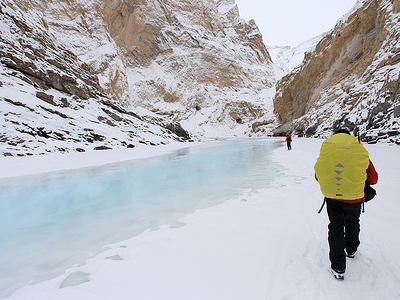About 20 kms south-east of Rangdum stands the Panzila axis, across which lies Zanskar, the most isolated of all the trans-Himalayan valleys. The Penzila pass (4,401m) is a picturesque tableland surrounded by snow-covered peaks. Zanskar is a tri-armed valley system situated between the Great Himalayan Range and the Zanskar mountains, the three arms radiating star-like towards the west, north and south from a central central expanse. Here the Zanskar River comes into being by the confluence of its two Himalayan tributaries, the Stod / Doda and the Lingti-Tsarap Rivers.
It is mainly along the course of this valley system that is approximately 14,000 strong, mainly Buddhist population lives. Zanskar is surrounded by high-rise mountains and deep gorges.It remains inaccessible for almost 8 months a year due to heavy winter snowfall resulting in closure of all access passes, including the Penzi it. This geographical isolation and the esoteric nature of Buddhism practiced here have enabled its inhabitants to preserve their identity, so that to-day Zanskar is the least interfered with microcosms of Ladakh . Within the mountainous ramparts of this ‘Shangri-La’ are a number of ancient yet active monastic establishments. Some of these foundations have evolved around remote mountain caves, Which are by legend associated with famous Buddhist saints. These are in fact the main places of attraction for the visitors in the area, in addition to the haunting beauty of the spectacular landscape and the ancient.

